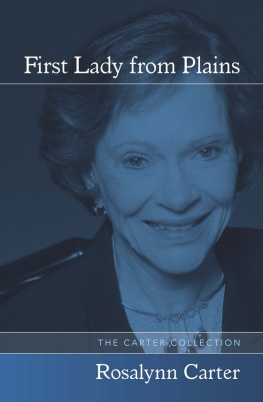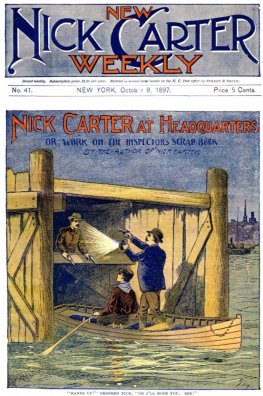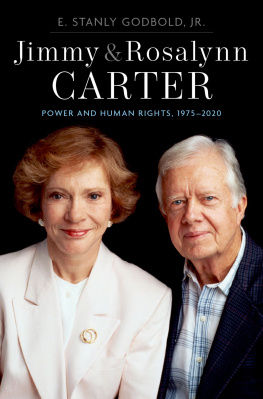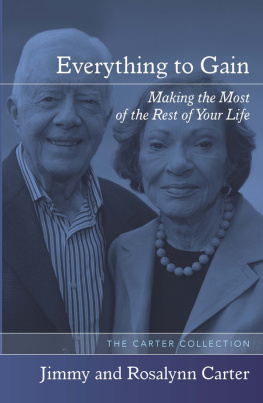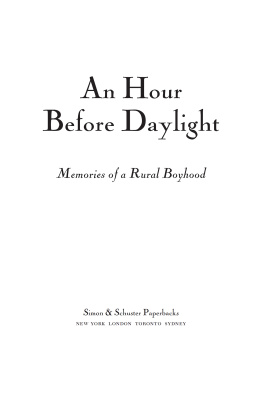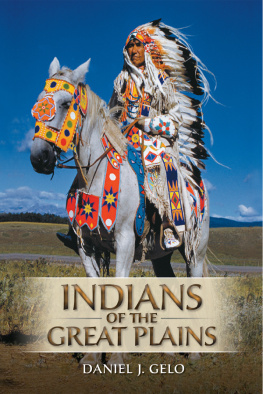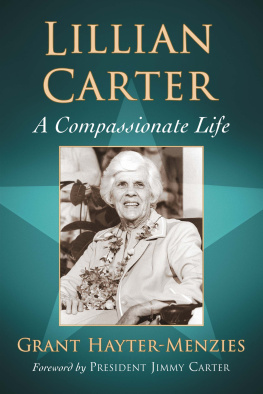Copyright 1984, 1994 by Rosalynn Carter
Reprinted by arrangement with Houghton Mifflin Company, Boston
The University of Arkansas Press edition published 1994
All rights reserved
Manufactured in the United States of America
02 01 00 99 98 6 5 4 3 2
Designed by Ellen Beeler
The paper used in this publication meets the minimum requirements of the American National Standard for Permanence of Paper for Printed Library Materials Z39.48-1984.

Library of Congress Cataloging-in-Publication Data
Carter, Rosalynn.
First Lady from Plains / Rosalynn Carter.
p. cm.
Originally published: Boston: Houghton Mifflin, 1984.
Includes index.
ISBN 1-55728-355-9 (pbk.)
1. Carter, Rosalynn. 2. Carter, Jimmy, 1924 . 3. Presidents spousesUnited StatesBiography. I. Title.
E874.C434 1994
973.926'092'2dc20
[B]
94-20494
CIP
ISBN-13 978-1-61075-155-1 (electronic)
For Jimmy
Illustrations
Following page 110
Edgar Smith, Rosalynns father
Allie Murray Smith, Rosalynns mother
Plains, Georgia, in 1925
Rosalynn, age 6
In the seventh grade, age 12
Rosalynns childhood home (Courtesy of Charles Plant)
Jimmy as a college student, 1942
Jimmy and Rosalynn on their wedding day, July 7, 1946
Rosalynn and her family, 1951
With Jeff and Jack in Jimmys 1966 campaign for governor (Ledger-Enquirer, Columbus, Georgia)
Upon Jimmys election as governor, 1970 (AP Wirephoto)
Before the Governors Inaugural Ball
Fourth of July Parade in Atlanta with Amy, 1971 (Courtesy of Charles Pugh)
Jimmy taking the inaugural oath, January 20, 1977 (Carter Presidential Materials Project, National Archives)
The Carter family walking down Pennsylvania Avenue on Inauguration Day (Wide World Photos)
At the Inaugural Ball
In the family dining room at the White House
A public meeting with members of the Presidents Commission on Mental Health
Welcoming a guest at a White House reception for retarded citizens
Following page 246
With Liz Carpenter and Betty Ford at the National Womens Conference in Houston, 1977
A working lunch with Jimmy in the Oval Office
Planning Rosalynns trip to Latin America, with the President, Secretary of State Vance, National Security Adviser Brzezinski, and Vice President Mondale
With Prime Minister Manley in Jamaica, May 1977 (Carter Presidential Materials Project, National Archives)
During the Camp David negotiations with President Sadat and Prime Minister Begin, September 1978
A reception for Rostropovich
Dancing with the mayor of Linz, West Germany, July 1978
Rosalynn and Amy with Pope John Paul II at the Vatican, May 1979 (Pontificia Fotografia Felici)
With Latin American leaders at the inauguration of President Blaunde of Peru, July 1980
In a Cambodian refugee camp in Thailand, November 1979 (Carter Presidential Materials Project, National Archives)
With Soviet President Leonid Brezhnev
With Vice Chairman Deng Xiaoping
On the phone with Jimmy during the 1980 presidential campaign
With Jimmy and their grandchildren, James, Jason, and Sarah
With the Mondales in the Oval Office, January 1981
At home in Plains
Photographs not otherwise credited belong to the Carter family.
Acknowledgments
I am grateful to many people for their contributions to this book. It was not easy for me to write about my life. But I began by interviewing old friends and relatives and by reading my personal diary, in which I had recorded so many experiences. This brought back a rush of memories, some that were painful and some that made me laugh aloud. My long conversations with Jimmy and our children, my White House staff, and our special friends added a sense of balanceand humor.
After I had finished typing more than a thousand pages, I turned to Linda Bird Francke, without whose help the final version would not have appeared in this form. Having bravely waded through my document, she made two trips to Plains. Her hundreds of probing questions clarified my thoughts and on occasion revealed some that I would otherwise have preferred to keep buried. I am deeply grateful to her.
I would also like to thank Nan A. Talese, my editor, who became my friend as well as my adviser; Judy Carter for her help with research and suggestions, and even a word or a paragraph when I needed one; the late Rita Merthan, who typed all of my White House diary notes, coming to Georgia after we moved home to finish them for me; Madeline MacBean for her invaluable assistance; and Jimmy for his help and his patience over the past three years.
Thanks also to Bob Pastor, Mary Hoyt, Dr. Tom Bryant, Gretchen Poston, Kathy Cade, Hamilton Jordan, and Steve Hochman for reading the manuscript; and to members of my White House staff for their helpCarol Benefield, Barbara Block, Andrena Brown, Rhonda Burnette, Jane Cabot, Faith Collins, Paul Costello, Kit Dobelle, Carol Durst, Marilyn Funderburk, Ellen Kelley, Nancy Konigsmark, Barbara Langhoff, Wanda Lewis, Vikki Lovett, Carroll Ann Rambo, Amy Ryan, and Jake Sullivan.
I am deeply grateful to all those at Houghton Mifflin who worked so hard, especially Helena Bentz and Luise M. Erdmann.
Thank you, and thanks also to the many others who helped but are not mentioned by name.
Preface 1994
Much has happened since I wrote First Lady from Plains. Jimmy and I had been home from the White House for only a few years then, the Carter Center was just beginning to take shape, and we were becoming adjusted to living out of the spotlightto a degree. The wonder of being private citizens in Plains again was appealing and satisfying.
But what we learned after returning home was that because Jimmy had been President, we still had the resources, experts we could call upon for help in almost any endeavor we chose. That led to a lot of questions. Do we use that influence? How do we use that influence? What are our obligations? What are our opportunities? Are we in a position to do some things that others are not able to do? Can we be helpful in solving some of the problems that affect peoples lives? How will we accomplish the tasks that we might choose?
We would have the Carter Center in Atlanta as a forum from which to pursue issues that were important to us. We had been relieved of official responsibilities in Washington four years earlier than anticipated, which left us with time. Our children were all gone from home. And, we were reasonably young.
Ten years have passed since I wrote the epilogue of my book. Our lives are now as filled, or more filled, than they have ever been. The Carter Center has become more than we could have envisioned. We have an array of programs that span several continents, and we travel often to stay in touch with them.
Our main focus is on conflict resolution and human rights in the broadest sense. This includes health, food production, housing, as well as the political freedoms usually associated with human rights. When people live in poverty and are hungry, or sick, or without homes, and when they suffer political oppression, they tend to rebel against their governments, leading to conflict.
Most of our efforts have been among people of the developing world, trying to overcome some of the obstacles to a good, productive, and peaceful life. The Task Force on Child Survival and Development, located at the Carter Center, is responsible for immunizing all children in the developing world and for carrying out the recommendations for health care of the United Nations Conference on Children. This includes screening and treating for parasitic worms and working with mothers to educate them about basic sanitation and nutrition.


